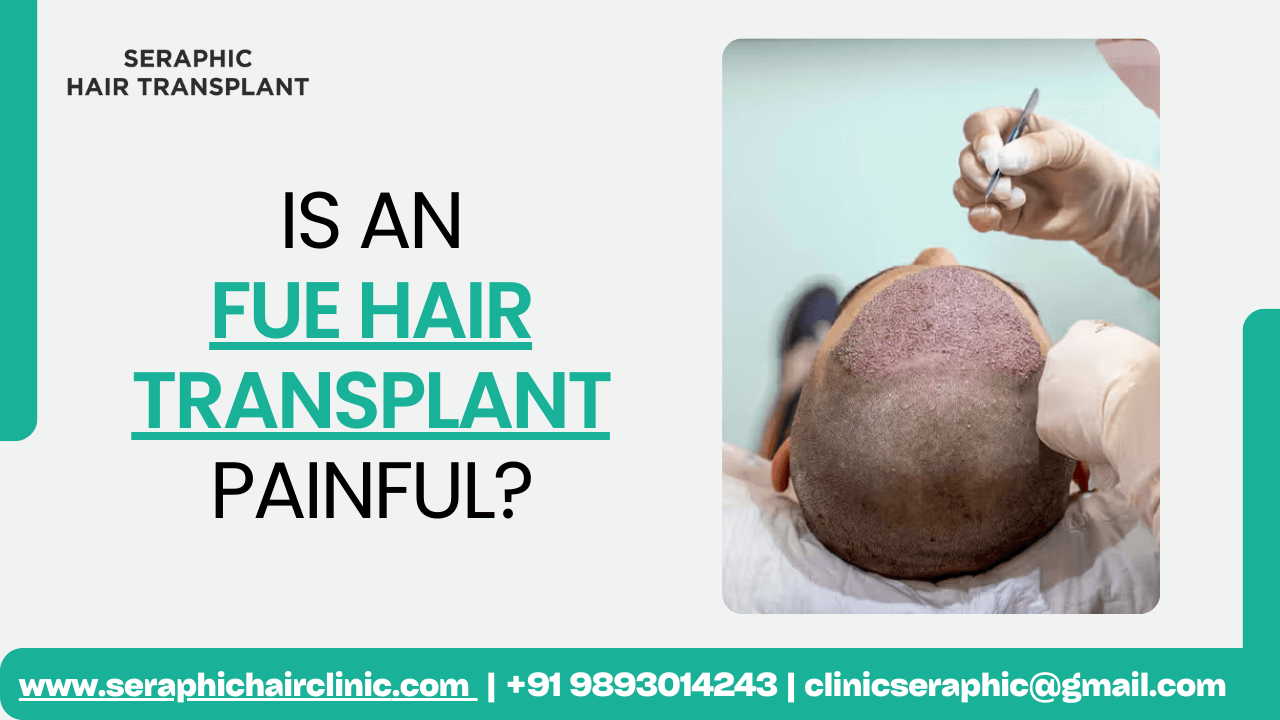Follicular Unit Extraction (FUE) is a popular hair transplant technique known for its minimally invasive approach and natural-looking results. As with any surgical procedure, one common concern among prospective patients is the level of pain and discomfort associated with FUE. Understanding the pain management aspects of the FUE procedure can help alleviate concerns and set realistic expectations. This article explores the pain levels associated with FUE hair transplantation, the factors influencing pain, and the strategies used to manage discomfort during and after the procedure.

What is Follicular Unit Extraction (FUE)?
Overview of FUE
Follicular Unit Extraction (FUE) is a hair transplant technique that involves extracting individual hair follicles from a donor area, typically the back or sides of the scalp. These follicles are then implanted into the recipient area where hair loss has occurred. The procedure is favored for its precision and minimal invasiveness compared to traditional methods like Follicular Unit Transplantation (FUT).
Pain During the FUE Procedure
Local Anesthesia
How It Works: During an FUE hair transplant, local anesthesia is administered to numb the donor and recipient areas. This numbing agent ensures that you remain comfortable and pain-free during the extraction and implantation phases.
Effectiveness: Local anesthesia is highly effective at minimizing pain during the procedure. Patients typically report feeling little to no pain while the anesthesia is in effect, although there may be some pressure or minor discomfort.
Common Experiences:
- Initial Needle Prick: The most noticeable discomfort is often associated with the initial injection of anesthesia. This sensation is usually brief and manageable.
- Pressure Sensation: Some patients may feel a sense of pressure or movement during the extraction and implantation phases, but this should not be painful.
Pain After the FUE Procedure
Post-Operative Discomfort
Immediate Aftercare: After the procedure, it is common to experience some level of discomfort in the donor and recipient areas. This discomfort is typically manageable with prescribed medications and self-care measures.
Types of Postoperative Discomfort:
- Soreness: The treated areas may feel sore or tender, similar to the sensation of a mild bruise.
- Swelling: Mild swelling in the scalp or forehead may occur but usually subsides within a few days.
- Itching: Itching in the recipient area is common as the scalp heals. This is a natural part of the healing process and can be alleviated with proper care and medication.
Pain Management Strategies:
- Pain Medication: Over-the-counter pain relievers or prescribed medications can help manage post-operative discomfort.
- Cold Compresses: Applying cold compresses to the affected areas can reduce swelling and provide relief.
- Proper Aftercare: Following the post-operative care instructions provided by your surgeon can aid in reducing discomfort and promoting healing.
Factors Influencing Pain Levels
1. Individual Pain Tolerance
Pain perception varies among individuals. Some people may experience minimal discomfort, while others may be more sensitive. Communicating with your surgeon about any concerns can help tailor pain management strategies to your needs.
2. Surgeon’s Skill and Technique
The experience and skill of the surgeon play a significant role in the level of discomfort experienced. An experienced surgeon using advanced techniques can minimize trauma to the scalp, reducing pain and enhancing overall comfort.
3. Size and Scope of the Procedure
The extent of the hair transplant, including the number of grafts extracted and implanted, can influence the level of discomfort. Larger procedures may result in more post-operative soreness compared to smaller ones.
Comparing FUE to Other Hair Transplant Techniques
FUE vs. FUT
- FUE (Follicular Unit Extraction): Generally involves less post-operative pain and discomfort due to its minimally invasive nature. There is no linear scar, and the recovery time is typically shorter.
- FUT (Follicular Unit Transplantation): Involves a linear incision and removal of a strip of skin, which may result in more post-operative discomfort and a longer recovery period.
FUE vs. DHI (Direct Hair Implantation)
- DHI (Direct Hair Implantation): Similar to FUE in terms of minimizing pain and invasiveness. DHI involves direct implantation of hair follicles using specialized tools, potentially offering a more comfortable experience for some patients.
Conclusion
Follicular Unit Extraction (FUE) is known for its minimally invasive approach and effectiveness in treating hair loss. While no surgical procedure is completely free of discomfort, FUE is designed to minimize pain through the use of local anesthesia and advanced techniques.
Pain During the Procedure: Patients generally experience minimal pain during the FUE procedure due to effective local anesthesia. The most noticeable discomfort is often limited to the initial injection.
Post-Operative Discomfort: After the procedure, mild soreness, swelling, and itching are common but manageable with appropriate medications and self-care.
Factors Influencing Pain: Individual pain tolerance, the skill of the surgeon, and the size of the procedure can affect the level of discomfort experienced.
By choosing a skilled and experienced hair transplant specialist in Indore and following post-operative care instructions, most patients find that FUE provides a comfortable and effective solution for hair restoration. If you are considering an FUE hair transplant, discussing pain management strategies with best hair transplant clinic in Indore can help ensure a smooth and comfortable experience.

